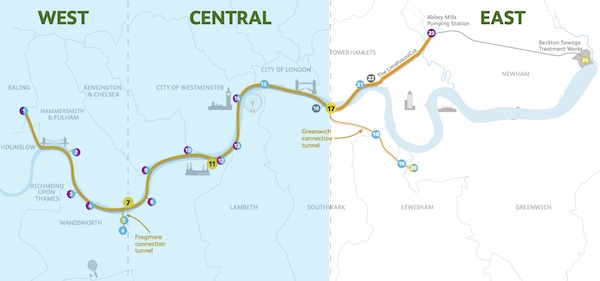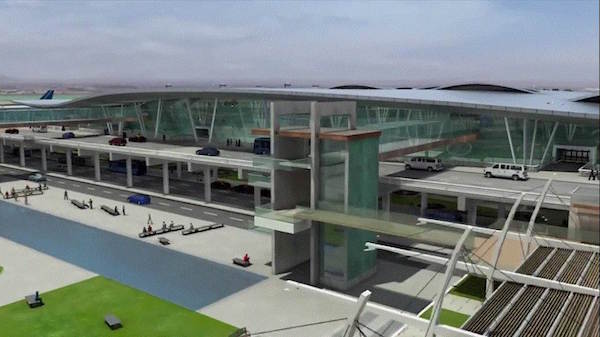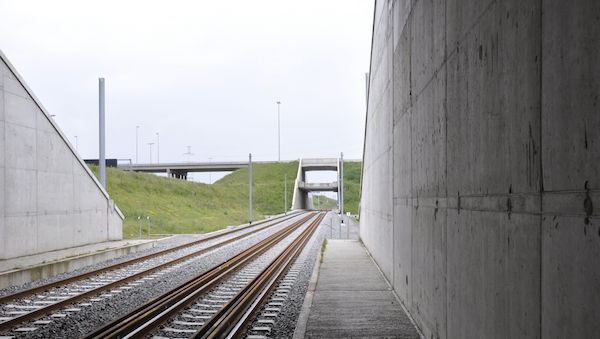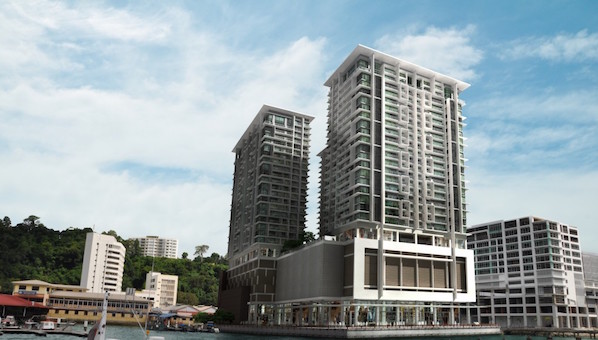
This publication ratifies the conclusion of the tender process organized by the Chilean government, which was made public on February 4, 2015. The Nuevo Pudahuel consortium made up of Aéroports de Paris(45% of the consortium), VINCI Airports (40%) and Astaldi (15%) now have the right to start studies and prepare the operation of the Arturo Merino Benítez International Airport in Santiago de Chile after the end of the current concession on September 30 2015, for a duration of 20 years.
As the airport operator, the Nuevo Pudahuel consortium main duties are to:
- the renovation of existing installations with the redesign and extension of the current terminal
- the funding, design and construction of a new 175,000 sqm terminal,which will increase the airport’s capacity to 30 million passengers, with potential for expansion beyond 45 million
- the operation and commercial development for the duration of the concession (20 years) of the main infrastructures: existing terminal and new terminals, car parks and future property developments
Design and construction works will be carried out by a consortium made up of VINCI Construction Grands Projets (50 %) and Astaldi (50 %).

This new 24 km long section of motorway includes a 2.5 km long cablestayed viaduct above the river Usk, two key interchanges and 36 structures.
This £750 million project will help deliver government aims to improve infrastructure in Wales by making it more efficient, safer and more sustainable.
Development work will commence immediately, a Public Local Inquiry should get under way about 18 months from now and construction, subject approval by the authorities, could start in spring 2018.
VINCI has significant expertise in complex road works. Examples are the widening of the M1 junctions 25 to 28 carried out in the UK, the East End Crossing in Indiana (United States) currently under construction and the new coastal highway project on Reunion Island, which is just getting under way. It also has substantial expertise in environmental planning and local stakeholder relations (M1 Widening and Bexhill Hastings Link Road in the UK, Tours-Bordeaux high speed rail line and A89 motorway in France).

The world-class companies, which have been chosen after intense competition as the preferred tenderers, will build a component each of the three parts of the mega tunnel that has been split into geographical sections of west, central, and east. This means thousands of jobs will be created in London over the coming years, and excellent value for money for customers.
The project, which will be the biggest infrastructure project ever under taken by the UK water industry, will make London’s sewerage network fit for the 22nd century and will help prevent the millions of tonnes of sewage pollution that currently discharge into the tidal River Thames every year.
Andy Mitchell, Chief Executive at Thames Tideway Tunnel, said: “We have selected our preferred bidders to work on the three main works packages because we have absolute faith in their ability to carry out these major pieces of work safely, considerately and sustainably and we are looking forward to working with them to offer the thousands of jobs that will help make this project a reality.
“This is not just an engineering project, this is about reconnecting London with its river by cleaning it up and making it something that is integral to our city, for the growing population, thriving businesses and to increase leisure uses. This is a unique opportunity to be involved in improving London’s environment and economy and we’re very excited for what the future holds.”
The Thames Tideway Tunnel project will create more than 4,000 direct sustainable jobs, and another 5,000 jobs indirectly. It will be offering hundreds of apprenticeships and work placements, is committed to employing local people, and will be creating a never-before seen surge in the river economy through marine employment opportunities.
The contractors which have been chosen as the preferred main works tenderers are: BMB JV (Joint Venture of BAM Nuttall Ltd, Morgan Sindall Plc and Balfour Beatty Group Limited) for the West contract, FLO JV (Joint Venture of Ferrovial Agroman UK Ltd, Laing O’Rourke Construction) for the Central contract and CVB JV (Joint Venture of Costain VINCI Construction Grands Projets Bachy Soletanche) for the East contract.
The contracts are expected to be awarded in the summer, when the investors who will be chosen to finance and deliver the project as the Infrastructure Provider, are announced.
www.thamestidewaytunnel.co.uk/news/media-centre/thousands-of-jobs-to-be-created-as-contractors-named-for-london’s-‘super-sewer’
This emblematic project in London is built by M.V.B, joint-venture between Morgan Sindall, VINCI Construction Grands Projets and Bachy Soletanche. The infrastructure – scheduled to start operations in 2016 – will allow to decrease by 40% the proportion of rainwater and waste water flowed into the River Thames without any treatment.
The Prince of Wales went downstairs into the tunnel by taking the Abbey Mills Shaft and met several apprentices and engineers such as Lilia Hanana, H&S Manager (picture).
After the visit, the Prince of Wales was a part of a ceremony where he met François Pogu, Project Director and, Pierre Paré, Chief Financial Officer of British Isles office.

Working together as the Nuevo Pudahuel consortium, Aéroports de Paris (45 % of the consortium through), VINCI Airports (40 %) and Astaldi (15 %) have been selected by the Chilean government as having presented the best offer for the concession of Arturo Merino Benítez International Airport in Santiago de Chile, South America’s 6th largest airport which saw 16.1 million passengers in 2014, almost half of whom were international passengers.
The project consists on the management and development of the airport. The financial offer was fixed at 77.56 % expressing the proportion of revenue from the concession to be turned over to the government. In application of the new concession contract, the Nuevo Pudahuel consortium will be granted from 1 October 2015 (at the end of the current concession contract) with the following main missions:
- the renovation of existing installations with the redesign and extension of the current terminal
- the funding, design and construction of a new 175,000 sqm terminal, which will increase the airport’s capacity to 30 million passengers, with potential for expansion beyond 45 million
- the operation and commercial development for the duration of the concession (20 years) of the main infrastructures: existing terminal and new terminals, car parks and future property developments
The project covers a 7-storey podium over two underground levels that will house a 20,000 m2 shopping centre and more than 900 parking spaces, as well as a complex made up of three 20-storey residential towers with a total of 333 apartments. The value of the contract, which does not include the foundations and underground levels, is €70 million. Handover is scheduled in July 2016.
This further success confirms VINCI Construction Grands Projets as an operator in Malaysia, where local developers appreciate the quality of the structures it has completed and is currently building. VINCI Construction Grands Projets is currently carrying out the Menara Hap Seng tower project in Kota Kinabalu under a design-build contract and is also operating in Kuala Lumpur with the current Berjaya Central Park residential and office complex, having previously handed over the Berjaya Time Square shopping centre in 2003.

The motorway will ensure smooth traffic flow in a highly congested area with some 140,000 cars per day. Russian-French teams will operate the motorway and ensure a very high standard of maintenance, safety and traffic information.
The M11 motorway meets the most exacting European standards in terms of technical requirements, environmental integration, land take optimisation (30% reduction in surface area required compared to the initial project), hydraulic transparency and noise protection for local residents.
This first section of the Moscow-Saint Petersburg motorway will be progressively opened to traffic between now and the summer of 2015.
The Russian state awarded the concession for the first section of the Moscow-Saint Petersburg motorway to NWCC, a joint subsidiary of Mostotrest and VINCI Concessions, in 2008. The contract covers design, financing and construction of the section and its operation and maintenance for a period of 30 years.
Built under a concession contract, the motorway is financed through a combination of shareholder investment (RUB 9.2 billion – VINCI Concessions 50%, Mostotrest 50%), a ruble bond issue (RUB 10 billion), a bank loan (RUB 29 billion) and a state subsidy of RUB 23 billion.
The contract is worth €13,150,000 with Agence française de développement providing funding to the project, which includes the construction of two storage cells and two basins (aerobic and anaerobic) over a period of 18 months.

The project establishes an additional link between the two banks of the Escaut estuary in the Port of Antwerp, currently Europe’s second-largest port, to accommodate an increase in goods traffic and free up capacity on the suburban rail lines to decongest the road network.
The works, awarded to the LocoRail joint venture and accounting for a total investment of €840 million, were carried out under a public private partnership (DBFM contract). The LocoRail joint venture bringing together CFE (25 %), VINCI Concessions (25 %) and BAM PPP–PGGM (50 %) is responsible for financing, designing and building the infrastructure and then maintaining it for a period of 38 years. Financing is provided by the EIB (European Investment Bank) and six commercial banks: Bayern LB, Bank Nederlandse Gemeenten, BNP Paribas Fortis, ING, Banco Santander and Société Générale.
The design-build contract was awarded to the LocoBouw joint venture made up of MBG, CEI-De Meyer, VINCI Construction Grands Projets and Wayss & Freytag Ingenieurbau. The work covers tunnel infrastructure and technical installations in the 16.2 km tunnel, which includes a 4.27 km cut and cover, a renovated existing tunnel (Beverenspoortunnel) and a double bored tunnel with a length of nearly 6 km. The highly complex project got under way in 2008 and was completed on schedule in July 2013. Tests were carried out on the line in 2014.

The confinement comprises two semi-arches, each of which has undergone three jacking operations since November 2012, following extensive remediation work, excavation and construction of foundations at the assembly area located immediately adjacent to the power plant’s No 4 reactor. The final jacking operation was lifted on 24 October 2014.
The following stage will involve assembling the two halves of the confinement structure together, installing all the structure’s systems (ventilation, power supply and control-command), and then pushing the confinement structure over the current sarcophagus, planned for spring 2017. Following that, work on connecting the side walls of the arch and ensuring their tightness will take place in order to fully isolate the reactor from the outside environment. Delivery is scheduled for November 2017. This will create the conditions for dismantling the No 4 reactor sarcophagus in complete safety.
This exceptional project, the first of its kind, leverages the technical expertise and engineering creativity of two of the world’s construction industry majors. It is financed by the Chernobyl Shelter Fund, administered by the European Bank for Reconstruction and Development (EBRD) involving 43 donor governments and organisations.











